Amanita Muscaria - Toxic? Therapeutic? // Amanita Muscaria - Tóxico? Terapêutico?
Moving away from the technical and more "common" topics, today I'm going to talk a little about a mushroom that is part of this alternative framework that I studied for many years, the fantastic world of "natural" psychoactives. I put naturals in quotation marks exactly because it is a very common mistake to think that plants are natural and drugstore medicines are something else, evil. At least, that's what I thought when I delved into psychotropic studies. But at the end of the day AAS (acetylsalicylic acid) comes from willow bark, iMAO exists in Tranylcypromine or Phenelzine as well as Ayahuasca or Passion Fruit, and so on. The base is the same, the chemistry will not act differently if it is in the form of a root or if it is in a tablet. BUT, of course, here we have the important issue of interactions. Many substances in their natural environment have hundreds of alkaloids and components that together can have complex and often even unexpected functions. The question of the unexpected can be attributed in particular to the people I spoke of above and which I was a part of, the new age naturalists who think that nature is holy. And nothing better than Amanita Muscaria to explain a little about this complex topic of interactions, chemicals and psychoactive effects. But I think we better start at the beginning.
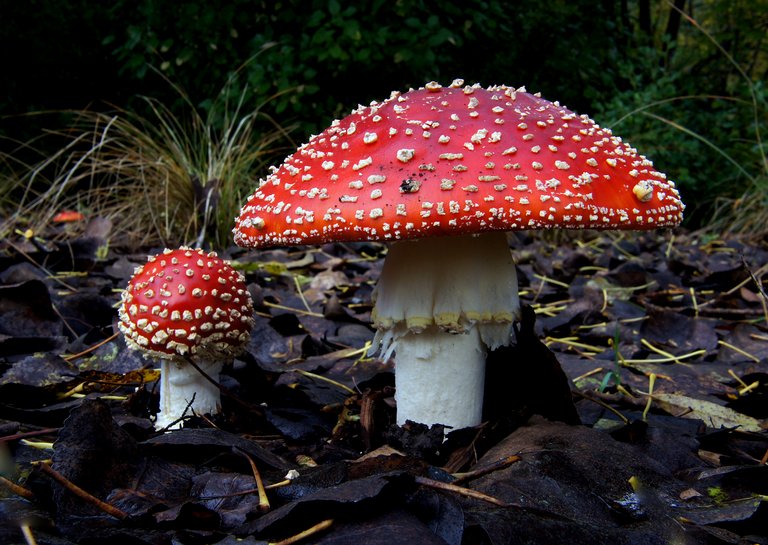
Source
Amanita muscaria is a fungus that has Siberian origins, but ended up spreading throughout most of the world, and as far as I know, this was thanks to the expansion process in the conifer area (the pines of various species) and the least I imagine this to be a completely "industrial" process, that is, performed by man over time. The pine has a process of seed dissipation through a capsule with a type of "wing" that can take it quite far from its place of origin, thus easily spreading the plant if it is in a suitable territory for its birth. At some point in history, some pines with Amanita muscaria mycelium (and variants) came coupled with pine root resin in their exports and, along with pines, fructified in fertile lands similar at least in part to their natural habitat. . From what I've learned over time, Amanitas are fungi that like the cold, and are born in clumps among its leaves and close to conifers. In general, they prefer a dry cold and do not do well with rainy seasons. It is common to first see a sequence of small Amanitas being born to "test the weather" and when they die they take the information to the mycelium to tell if it is already a good time for the rest to be born. In a favorable climate it is possible to find more than fifty of these mushrooms in a space of one hundred meters, for example.
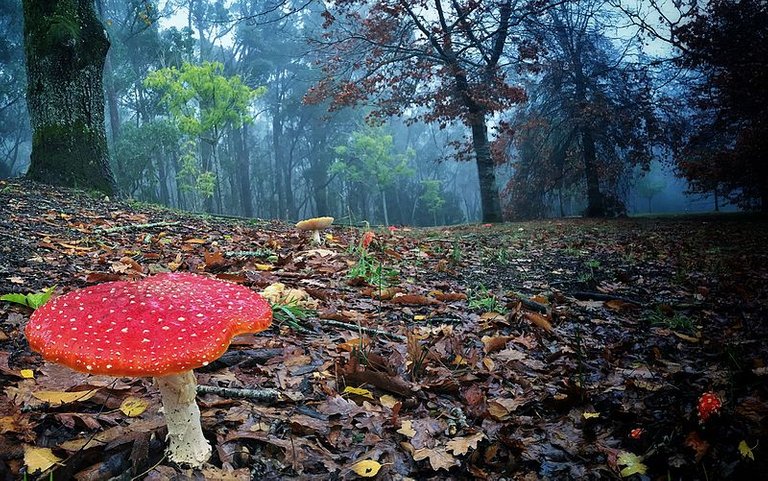
Source
The fact is that Amanita muscaria, like few other mushrooms in nature, has an incredible capacity for psychoactivity (and in this case, still curiously little explored). For many years, scientific literature and even mycology had it only as a poisonous and toxic mushroom, but as in the mythology of MAOIs, much of what is found in the literature (albeit scientific) is outdated or even misinformation when put into confrontation. with reality. However, this does not mean that the consumption of this mushroom is free from problems and toxins. Amanita does have dangerous substances that can cause problems depending on how it is used and not improbably, it can lead to death for an unsuspecting person who consumes a large amount raw or poorly prepared. The purpose of this article is even to make this clear, and to prevent this fungus from being used thoughtlessly, ignorantly and irremediably. But at the same time, showing its potential as a little-known therapeutic substance and clarifying the best methods for its consumption without the risks of intoxication. It is also worth remembering that these mushrooms (as well as ALL psychoactive plants known to modern society) were used by traditional peoples for millennia and have a history of their importance for different tribes and historical groups.
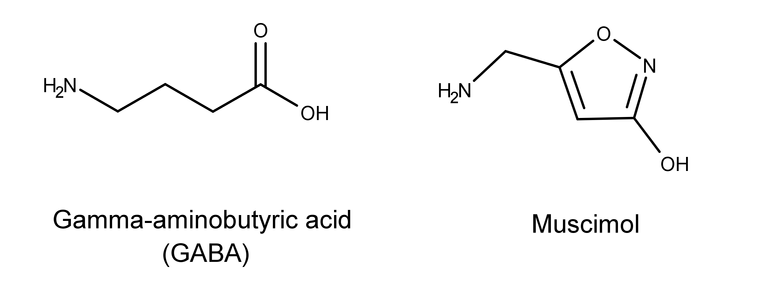
Source
But let's get to the facts. Amanita Muscaria has two main components considered to be its most important active ingredients. They are: Muscimol and Ibotenic Acid. Both have a directly psychoactive function and are responsible for the altered states of consciousness in the fungus, but each one with its nuances and complexities, I will speak first of the most "healthy" and harmless active principle that is Muscimol. This substance is a potent GABAergic agonist, that is, it activates GABA A. It is known that an acceptable and sufficient dose of Muscimol for a human being is 10 to 15mg, which can be found in 1 to 10 grams of Amanita mushroom. Muscaria (yes, it's a very large variation, but most studies suggest that at least 5 grams would be needed to reach this amount of Muscimol. However, as we will see shortly in the text, this is more complicated than it appears in this calculation , because the amount will vary not only by the mushroom region but also by the proportion of ibotenic acid converted after decarboxylation. In a common dose of muscimol what can you expect? Well, the main effects of Amanita in general are: distortion of perception visual and spatial, hypnotic state, relaxation, euphoria, sleep and auditory perceptual changes. But this experience is not only composed of "good psychedelic effects". Like any psychoactive compound, Amanita can generate effects unpleasant, some more common than others, such as: salivation, black-outs, dizziness, nausea, and so on. This will all depend only on the dose and amount of active ingredient present in the mushroom. Muscimol is a very safe substance that is still in its "infancy" in science, being studied recently even for some specific diseases, in addition, the gabaergic effect of Muscimol is very similar to the effects found for example in Zolpidem and other Z-Drugs.

Source
Ibotenic Acid is no joke. Although it is an interesting and potent agonist of NMDA receptors, of Glutamate and also of AMPA receptors, its neurotoxicity is undoubtedly a big problem for the likely benefits that could be obtained from its use. This neurotoxicity, although coming from "controversial" studies (since it is based on injections of ibotemic acid directly into the brain of rats!), should not be dismissed as important. The most interesting issue here is that 20-30% of the ibotenic acid present in amanita will be converted to muscimol within your body (in the liver), because it is a "pro-drug" of muscimol. However, this rate is small, and the vast majority must be eliminated through the heat process (decarboxylation) and also by drying. If the whole process of preparing Amanita is efficient, there will be very little ibotenic acid per mushroom and the experiment is thus much less risky.
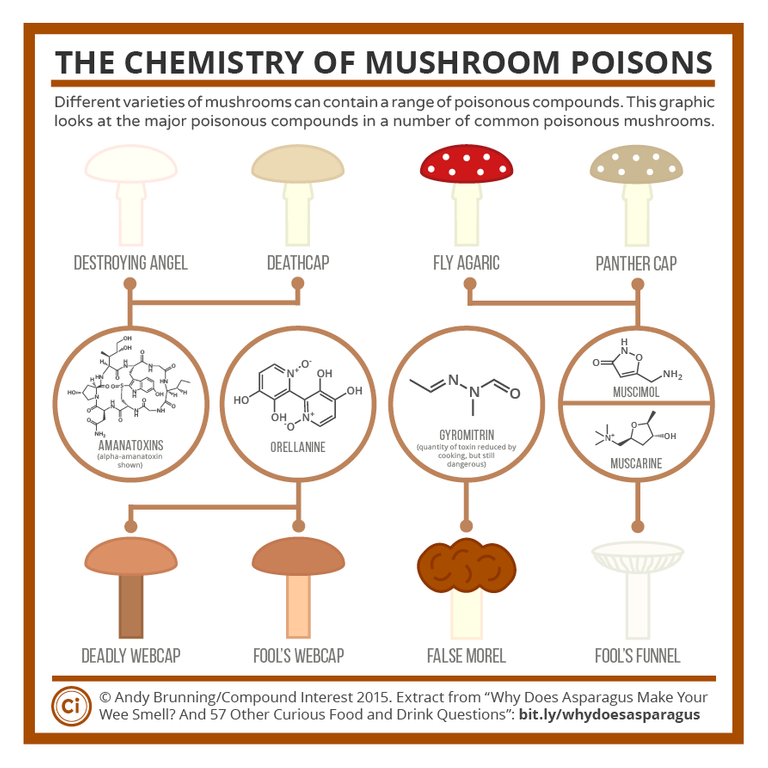
Source
The preparation of Amanita Muscaria (and its not-so-toxic variants) basically consists of drying the mushroom very well to preserve it after harvest (the best method is food-grade silica gel) but even the sun can be a great system, or oven at medium temperature until they are crispy. After that, cook the chopped/crushed mushroom in boiling water for at least 30 minutes. The mushroom to water ratio is a personal thing and I won't go into detail here, this kind of question will depend solely on your personal research and your ambitions. Having done the correct procedure, almost all the active principle of Amanita is transferred to the water in that time and the mushroom will no longer be useful, but squeeze it well with a sieve or fine cloth before discarding it, to enjoy its juice. After that, the water can be reduced to a low boil, thus making a greater concentration of the substance and preventing you from having to consume large amounts. WARNING. Be very careful with that. If you cook say 10 grams of dried mushroom, and reduce its liquid to half a cup for example, you could already be putting yourself in a state of severe risk of intoxication (and you don't want to go through that). Ideally, this reduction should be made with the sole intention of using microdoses, therapeutic amounts of the substance, which may have benefits and do not bring risks to mental or physical health.
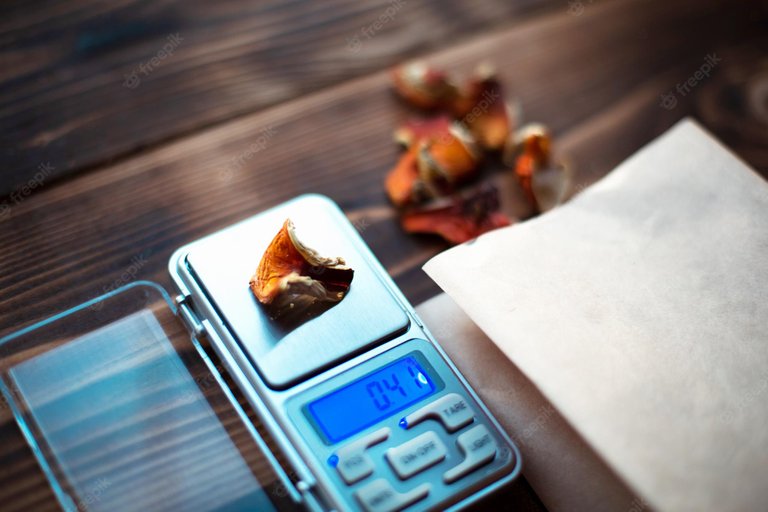
Source
Anyway, the topic is immense and I could stay here talking for hours, both the classic history of ancient peoples behind the Amanita as well as its potential for depression and autism treatments, or even reports of severe intoxication in idiots who don't study substance before using it, such as my own account of using Amanita many years ago, but that's it for today. I hope it was an interesting and enjoyable read! Thanks for visiting and voting!
Articles used to write this text: 1, 2, 3 and 4.
Thômas Helon Blum

Português
Saindo um pouco dos temas técnicos e mais "comuns", hoje vou falar um pouco sobre um cogumelo que é parte desse arcabouço alternativo que estudei por muitos anos, o fantástico mundo dos psicoativos "naturais". Coloquei naturais entre aspas exatamente por que é um erro muito comum acharmos que plantas são naturais e medicamentos de farmácia são outra coisa, do mal. Ao menos era assim que eu pensava quando mergulhava nos estudos dos psicotrópicos. Mas no final das contas o AAS (ácido acetilsalicílico) vem da casca do salgueiro, o iMAO existe tanto na Tranylcipromina ou no Phenelzine quanto na Ayahuasca ou no Maracujá, e assim por diante. A base é a mesma, a química não vai agir diferente se estiver em forma de raiz ou se estiver num comprimido. PORÉM, é claro, aqui temos a importante questão das interações. Muitas substâncias em seus meios naturais contam com centenas de alcaloides e componentes que juntos podem ter funções complexas e muitas vezes até mesmo inesperadas. A questão do inesperado pode ser atribuída em especial ao povo do qual falei acima e já fiz parte, os naturalistas nova era que acham que a natureza é santa. E nada melhor do que o Amanita Muscaria para explicar um pouco sobre esse complexo tema de interações, químicas e efeitos psicoativos. Mas acho melhor começarmos pelo começo.

Source
O Amanita Muscaria é um fungo que tem origem sibérica, mas acabou espalhando-se por boa parte do mundo, e até onde alcança meu conhecimento, isso se deu graças ao processo de expansão na área das coníferas (os pinheiros de várias espécies) e ao menos imagino que isso seja um processo completamente "industrial", ou seja, executado pelo homem ao longo do tempo. O pinus tem um processo de dissipação de sementes através de uma cápsula com um tipo de "asa" que pode o levar bastante longe de seu local de origem, espalhando assim facilmente a planta se essa estiver em território propício para seu nascimento. Em algum momento na história, alguns pinheiros com o micélio do Amanita Muscaria (e variantes) vieram acoplados à resina da raiz do pinheiro em suas exportações e, junto com os pinheiros, frutificaram em terras férteis e semelhantes ao menos em parte com seu habitat natural. Pelo que aprendi ao longo do tempo, os Amanitas são fungos que gostam do frio, e nascem aos montes em meio as suas folhas e próximas as coníferas. De forma geral preferem um frio seco e não se dão bem com temporadas de chuva. É comum ver primeiro uma sequencia de pequenos Amanitas nascerem para "testar o clima" e ao morrerem levam a informação até o micélio para contar se já está num momento bom para que o restante nasça. Em um clima propício é possível encontrar mais de cinquenta destes cogumelos num espaço de cem metros, por exemplo.

Source
O fato é que Amanita Muscaria, assim como poucos outros cogumelos na natureza, tem uma capacidade incrível de psicoatividade (e nesse caso, ainda curiosamente pouco explorada). Por muitos anos a literatura científica e mesmo na micologia o tinha apenas como cogumelo venenoso e tóxico, mas tal como acontece na mitologia dos IMAOs, muito do que se tem na literatura (ainda que científica) está em defasagem ou mesmo desinformação quando posto em confronto com a realidade. Porém, com isso não quero dizer que o consumo desse cogumelo é isento de problemas e toxinas. O Amanita possui sim substâncias perigosas e que podem causar problema depende do modo como se é utilizado e não improvavelmente, pode levar a morte um desavisado que consumir uma grande quantia crua ou mal preparada. O intento deste artigo é inclusive deixar claro isso, e evitar que tal fungo seja usado de forma impensada, ignorante e irremediável. Mas ao mesmo tempo, mostrar seu potencial de substância terapêutica pouco conhecida e esclarecer os melhores métodos para seu consumo sem os riscos da intoxicação. Cabe ainda lembrar que esses cogumelos (assim como TODAS as plantas psicoativas conhecidas pela sociedade moderna) eram utilizadas por povos tradicionais à milênios e possuem uma história de sua importância para diferentes tribos e grupos históricos.

Source
Mas vamos aos fatos. Amanita Muscaria possui dois principais componentes tidos como seus princípio ativos mais importantes. São eles: O Muscimol e o Ácido Ibotênico. Ambos tem função diretamente psicoativa e são os responsáveis pelos estados alterados da consciência no fungo, porém cada qual com suas nuances e complexidades, falarei primeiro do mais "saudável" e inofensivo princípio ativo que é o Muscimol. Essa substância é um potente agonista gabaérgico, ou seja, ativa o GABA A. Ao que se sabe uma dose aceitável e suficiente de Muscimol para um ser humano é de 10 a 15mg, o que pode se encontrar em 1 a 10 gramas de cogumelo Amanita Muscaria (sim, é uma variação muito grande, mas a maioria dos estudos sugere que ao menos 5 gramas seriam necessárias para se alcançar essa quantidade de Muscimol. Porém, como veremos em breve no texto, isso é mais complicado do que se parece nesse cálculo, por que a quantidade irá variar não só pela região do cogumelo mas também pela proporção de ácido ibotênico convertido após decarboxilação. Numa dose comum de muscimol o que se pode esperar? Bom, os principais efeitos do Amanita de forma geral são: distorção da percepção visual e espacial, estado hipnóticos, relaxamento, euforia, sono e alterações perceptivas auditivas. Mas nem só de "bons efeitos psicodélicos" é composto essa experiência. Tal como qualquer composto psicoativo, o Amanita pode gerar efeitos desagradáveis, alguns mais comuns que outros, como: salivação, black-outs, tontura, nausea, e assim por diante. Isso tudo dependerá apenas da dose e da quantidade de principio ativo presente no cogumelo. O Muscimol é uma substância bastante segura e que está ainda em sua "infância" na ciência, sendo estudado recentemente até mesmo para algumas doenças específicas, além disso, o efeito gabaérgico do Muscimol tem muita semelhança com os efeitos encontrados por exemplo no Zolpidem e nas outras Drogas-Z.

Source
Já o Ácido Ibotênico não é brincadeira. Ainda que seja um interessante e potente agonista dos receptores NMDA, do Glutamato e também dos receptores AMPA, sua neurotoxicidade é sem dúvidas um grande problema para os prováveis benefícios que poderia se ter com seu uso. Essa neurotoxicidade ainda que venha de estudos "controversos" (já que baseia-se em injeções de ácido ibotêmico diretamente no cérebro de ratos!), não deve ser descartada como importante. A questão mais interessante aqui é que de 20 a 30% do ácido ibotênico presente no amanita irão ser convertidos em muscimol dentro de seu corpo (no fígado), por que ele é um "pró-drug" do muscimol. Porém, essa taxa é pequena, e a grande maioria deve ser eliminada através do processo de calor (decarboxilação) e também com sua secagem. Se todo o processo de preparo do Amanita for eficiente, haverá muito pouco de ácido ibotênico por cogumelo e a experiência torna-se assim muito menos arriscada.

Source
O preparo do Amanita Muscaria (e suas variantes não tão tóxicas) básicamente consiste em secar muito bem o cogumelo para preservá-lo após a colheita (o melhor método é sílica gel própria para alimentos) mas mesmo o sol pode ser um ótimo sistema, ou um forno em média temperatura até deixá-los crocantes. Depois disso cozinha-se o cogumelo picado/triturado em água fervente por pelo menos 30 minutos. A proporção de cogumelo para a água é algo pessoal e que não irei detalhar aqui, esse tipo de questão vai depender unicamente de suas pesquisas pessoais e suas ambições. Tendo feito o procedimento correto, quase todo o princípio ativo do Amanita se transferem para a água nesse tempo e o cogumelo não terá mais serventia, mas exprema-o bem com uma peneira ou pano fino antes de descarta-lo, para aproveitar seu sumo. Depois disso a água pode ser reduzida em fervura baixa, fazendo assim uma maior concentração da substância e evitando que tenha que consumir grandes quantidades. ATENÇÃO. Muito cuidado com isso. Se você cozinhar digamos 10 gramas de cogumelo seco, e reduzir seu líquido até dar meio copo por exemplo, você já pode estar colocando-se em um estado de risco severo de intoxicação (e você não vai querer passar por isso). O ideal é que essa redução seja feita com a intenção única de utilização de microdoses, quantias terapeuticas da substância, que podem ter benefícios e não trazem riscos à saúde mental nem física.
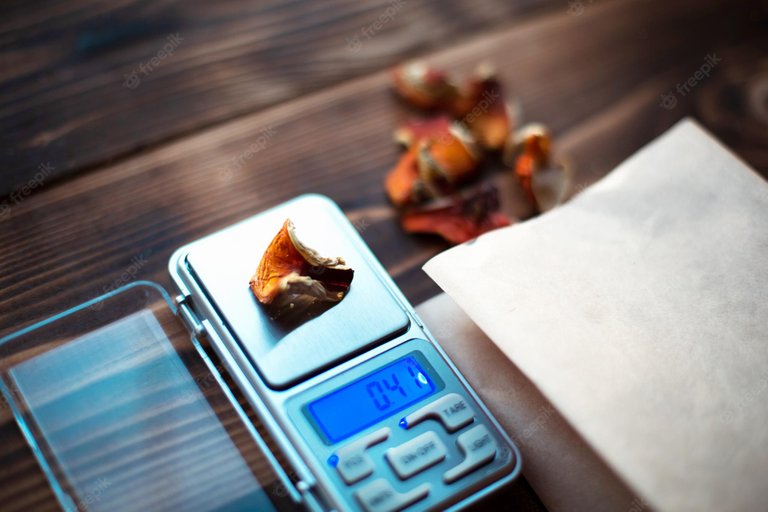
Source
Enfim, o tema é imenso e eu poderia ficar aqui falando por horas, tanto da história clássica de povos antigos por trás do Amanita como também de seus potenciais para tratamentos de depressão e autismo, ou mesmo de relatos de intoxicação severa em idiotas que não estudam a substância antes de usá-la, tal como meu próprio relato de uso do Amanita há muitos anos atrás, mas, por hoje ficamos por aqui. Espero que tenha sido uma leitura interessante e agradável! Agradeço pela visita e pelo voto!
Artigos utilizados para escrever esse texto: 1, 2, 3 e 4.
Thanks for your contribution to the STEMsocial community. Feel free to join us on discord to get to know the rest of us!
Please consider delegating to the @stemsocial account (85% of the curation rewards are returned).
You may also include @stemsocial as a beneficiary of the rewards of this post to get a stronger support.
Thanks for sharing the very interesting content. Because of Amanita Phalloides, I am usually scared of the entire amanita genus. But from this post, I have learnt that with moderation in quantity and with careful preparation, amanita muscarian can be therapeutically explored.
Exactly, man! But even with muscaria and variations with few toxines, we need take care to convert ibutenic acid, and be sure about the details of true amanita. Thanks for your reply!
You're welcome Sir. Many thanks
Obrigado por promover a comunidade Hive-BR em suas postagens.
Vamos seguir fortalecendo a Hive